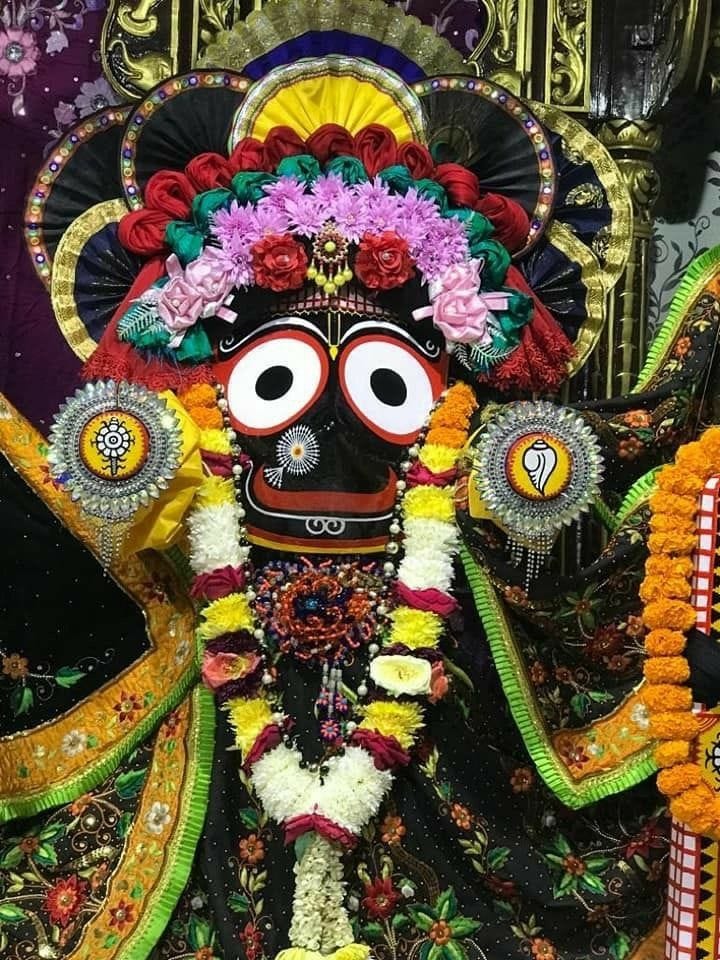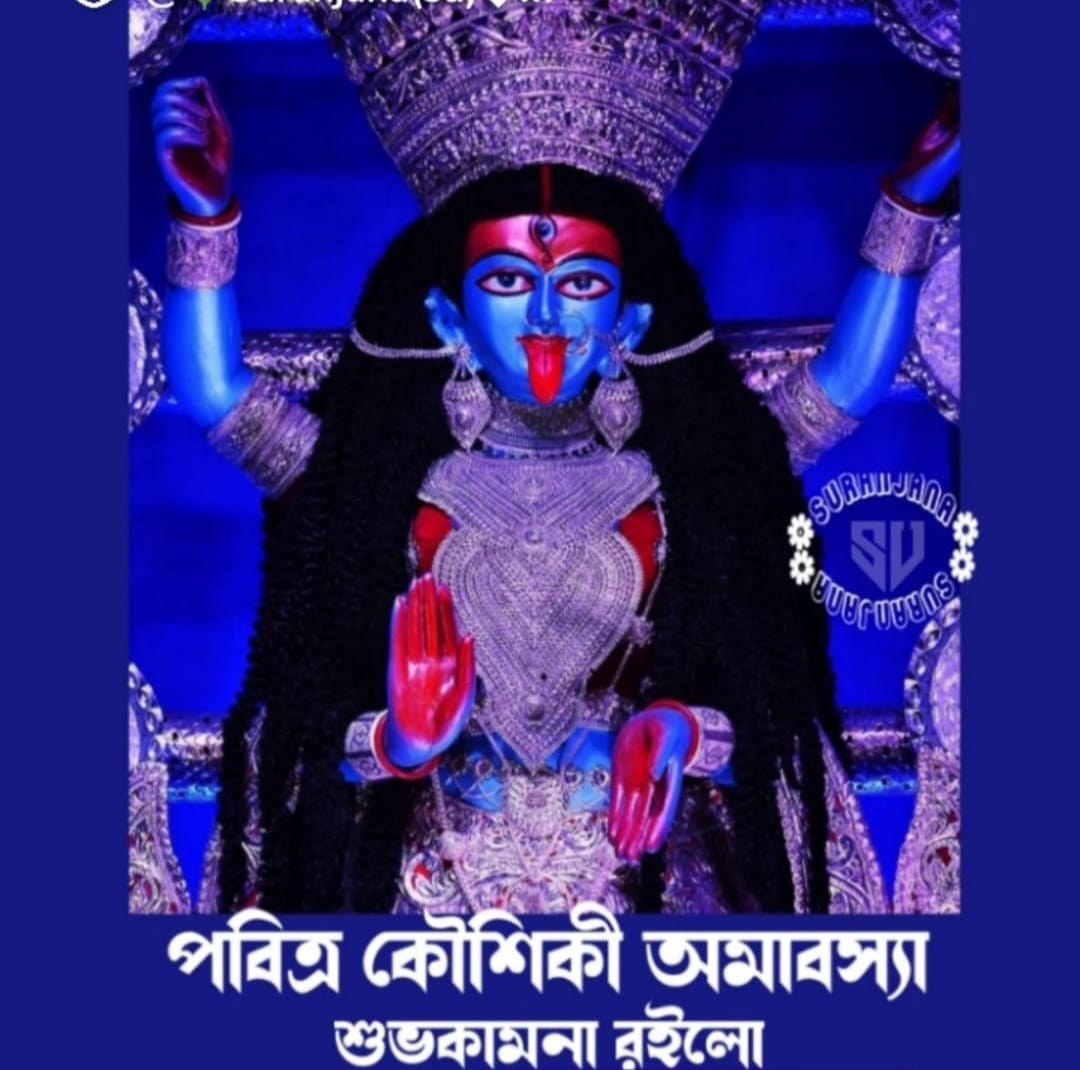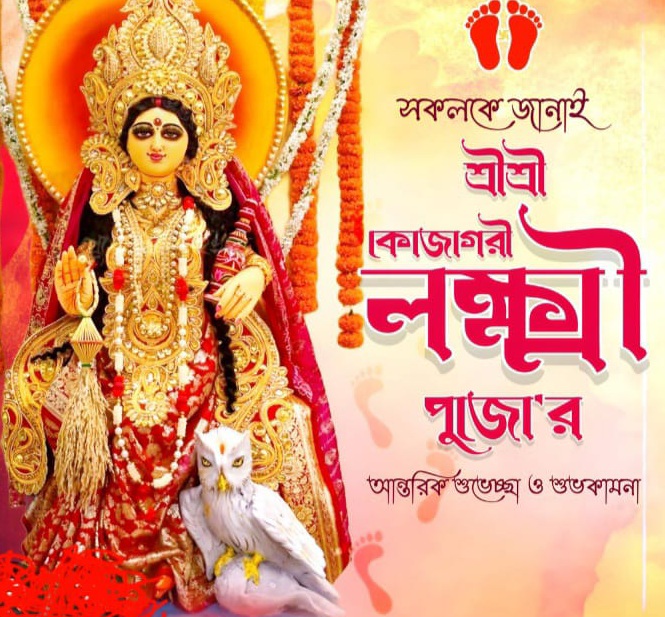Jai Jagannath
Location: Raghunathpur Posted on: 6/22/2024 7:35:26 PM

On this full-moon day, sixteen days before Ratha- yatra, Lord Jagannatha is bathed. He becomes sick and is confined to rest for fourteen days. He is then offered special care until He comes out for Ratha-yatra.
Kaushiki Amavasya 2024
Location: Raghunathpur Posted on: 9/2/2024 6:05:02 PM

From spiritual perspective, the significance of Poornima (full moon) and Amavasya (no moon) is so great that, one might fall short of words to describe it. Both these auspicious das are complete in themselves. One is Poornima which is full and complete with infinite light and the other is Amavasya which is also complete and brimming with darkness. If we look at them from a spiritual angle both are infinite, same as the great infinite sky- Mahakash. As per the Indian Hindu calendar 30 days of the month are divided into 15-15 days as per the cycle of the moon, and they are called- Shukla paksha and Krishna Paksha. The last day of the Shukla Paksha is called Poornima (Full moon) and the last day of Krishna Paksha is called Amavasya. Amavasya falling in the month of Bhadra holds all the more spiritual significance in itself. Out of the 12 Amavasyas falling in one year this Amavasya has been given the status of queen of all. It is also popularly known as Alok Amavasya, kushgrahini Amavasya, Kaushiki Amavasya and Bhadra Amavasya. In the life of Saadhak this day is very vital, as “Mahamaya Jagat Janani, Brahmamayi Maa” is worshipped with great devotion, seeking her blessings for Brahma-gyaan (ultimate Knowledge). This is the reason saadhak eagerly waits for this day for the entire year.
Happy Rose 🌹 Day
Location: Aryanak Express Posted on: 2/7/2025 11:40:10 AM

Happy Rose Day 🌹 Moon 🌙... 

 #moon
#moon 


Happy Valentines Day
Location: Raghunathpur Posted on: 2/14/2025 4:09:14 PM

Raj World wishes all its viewers Happy Valentines Day ... Seems that I am a selenophile... coz... A person who loves the moon is called a selenophile... The Kalyani days... #moon The moon is the reflection of your heart and moonlight is the twinkle of your love... 

 #SRK #srkforever #srkfan #shahrukhkhan
#SRK #srkforever #srkfan #shahrukhkhan
Happy Lakshmi Puja
Location: Kolkata Posted on: 10/6/2025 6:25:15 AM

Lakshmi Puja's history in Bengal and Bangladesh is tied to its significance as a major festival of wealth and prosperity, with the Kojagari Lakshmi Puja being a key event. The custom involves welcoming Goddess Lakshmi, the goddess of wealth, into homes on the full moon night after Durga Puja to bless families with good fortune. While the exact origins are not detailed, the practice has ancient roots, with Lakshmi's appearance from the churning of the ocean and her association with wealth and agricultural bounty pointing to her importance in a rice-cultivating society. In the Bengali context, the Kojagari festival involves specific rituals like the "Alakshmi Biday" (sending away of the Goddess of Poverty) and the drawing of alpana (intricate floor art) to welcome the goddess, making it a unique cultural expression of prosperity and spiritual purity. Historical Roots and Ancient Associations Ancient Texts: References to Lakshmi as the goddess of beauty and wealth can be found in ancient scriptures like the Rig Veda. Mythological Origins: According to myths, Lakshmi emerged from the churning of the ocean with a lotus in hand, or as the daughter of the sea god. Gajalakshmi Symbolism: The imagery of Gajalakshmi (Lakshmi flanked by two elephants) dates back to the first century before Christ, appearing on coins, indicating the deep antiquity of the belief. Cultural Significance in Bengal and Bangladesh Prosperity and Wealth: Lakshmi Puja is a primary Hindu festival in the region, dedicated to the goddess of wealth and good fortune. Kojagari Purnima: The festival is most prominent on Kojagari Purnima, the full moon night after Durga Puja, when it is believed Lakshmi visits homes to bestow blessings. Symbolic Rituals: Cleaning and Decoration: Homes are meticulously cleaned and decorated with lights and finery to welcome the goddess. Alpana: The floor of the house is adorned with intricate designs called alpana. Alakshmi Biday: A symbolic ritual where an idol of the Goddess of Poverty (Alakshmi) is made from cow dung and is "sent away" from the home using a winnowing fan. Connection to the Rice Cultivation Civilization Lakshmi's symbols, water, lotus, and elephants are strongly associated with a wet rice civilization, underscoring the connection between agricultural bounty and the concept of wealth represented by the goddess. Modern Practices Family Participation: The entire family often participates in the cleaning and decorating of the house for the puja. Offerings: Devotees prepare special sweets and offerings, known as "Panchbhog" (a five-course offering), to please the goddess. Cultural Identity: In West Bengal, while Kali Puja is held on the day of Diwali, Lakshmi Puja is still a highly cherished festival, especially the Kojagari Purnima event, reflecting the unique cultural diversity of the region.
Navigation
# moon total posts: 5Page: 1